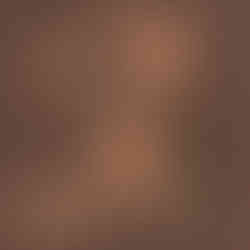Radical approaches to teaching photography
- PhotoED Magazine
- Mar 12, 2023
- 3 min read
Canadian photography educators Andrew Craig in Brampton, ON and Karen Stentaford in Sackville, NB have taken wild "new" approaches towards engaging their photography students in a mindful, meaningful way with impactful results.
In a Western post-covid society most of what we learn and teach now comes through a screen. The volume of information and images we flick past is immeasurable. However, research clearly (and obviously) speaks to issues around information absorption from screens. Attention spans, mental health, cognitive overload, and in many more ways our brains are impacted by "life" online.
Did you know... there is an organisation called, The Attention Council? People paid to figure out what works for advertisers to effectively push out big brand messages , and it's not always things flashing at you on a screen. The UK's MAGNETIC provides stats around analog information absorption, specifically editorial content, sharing research and data around the efficacy of slowing down via analog experiences and information. Some of the research they share indicates information from printed sources is considered more trustworthy by readers, and 75% of people in one study said they find reading a print magazine "relaxing."
If the idea of analog slow experiences/ information works for big brands aiming for a long game, could the same human behavioural research have a similar effect in classrooms as teachers navigate student attention spans?
The approaches Andrew and Karen as educators take go against the pervasive digital grain, and mass-marketing / education trends, as they guide their learners towards more impactful alternatives of information sharing.
Castlebrooke Secondary
Grade 12 teacher Andrew Craig shared this independent assignment he does with his class.
He says;
There’s not much to it, but I’ve found that it’s been an effective approach to giving my grade 10 students a new entry point into learning about photography. It’s analog by design without digital distractions, which is why I love the print edition of your magazine so much.
The Assignment
Your Goal:
We start each class session with10 minutes of independent reading about photography. You must select a choice from the options that are available in the classroom. We have a collection of magazines and books on photography.
No technology use is permitted during this time.
You must read a print publication of your choice.
What You Will Submit:
At the end of each month you will write a two paragraph (10 sentence) handwritten
reflection to summarize the single most interesting idea that you have discovered.
Your focus questions are:
Why do the ideas in my chosen article resonate with me? (include a quote from the article, and a diagram to illustrate the idea.)
How could I apply these ideas into my own creative work?


Mount AlLison University
Educator Karen Stentaford created images reflecting her time with her students.
Our teatime conversations echoed our course content – awareness of surroundings, being present, and slow photography.
The Assignment
TEATIME TUESDAY evolved from the desire to make time each week to slow down and have conversations with my students about work in progress, ideas, and checking in with each other. This time was about sharing and listening, free of screens and the usual busyness of class time.
The tea was locally sourced and we had a local herbalist/farmer come in to talk about her love of making tea, her process, and her connection to the land.
Lumen prints were a document of our time.
Once the tea steeped, the ingredients were placed on a piece of photographic paper and left to expose for the duration of our class. Exposures ranged based on location, changing light as we moved to shorter days, and the length of our conversations. The first in the series is blank, as we did not begin making lumen prints until the second week, however it is important to reference the time we shared.
Enjoyed this free read?!
Consider supporting us!
As the ONLY independent editorial photography publication on Canadian newsstands we'd love to continue producing great content for you to enjoy!
































